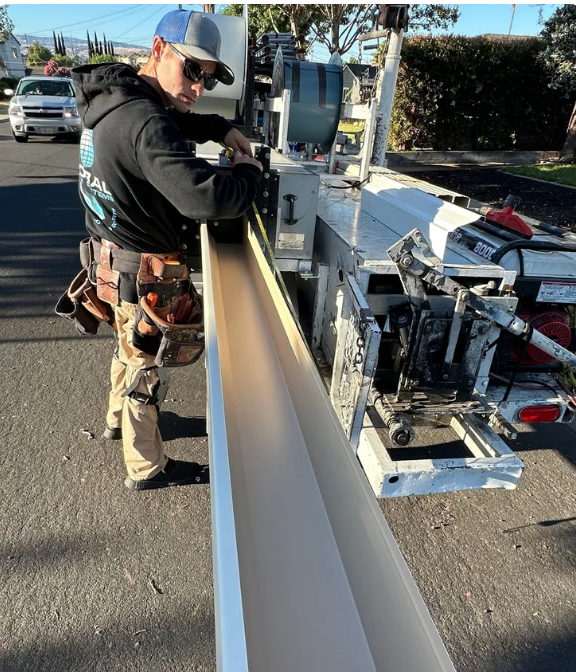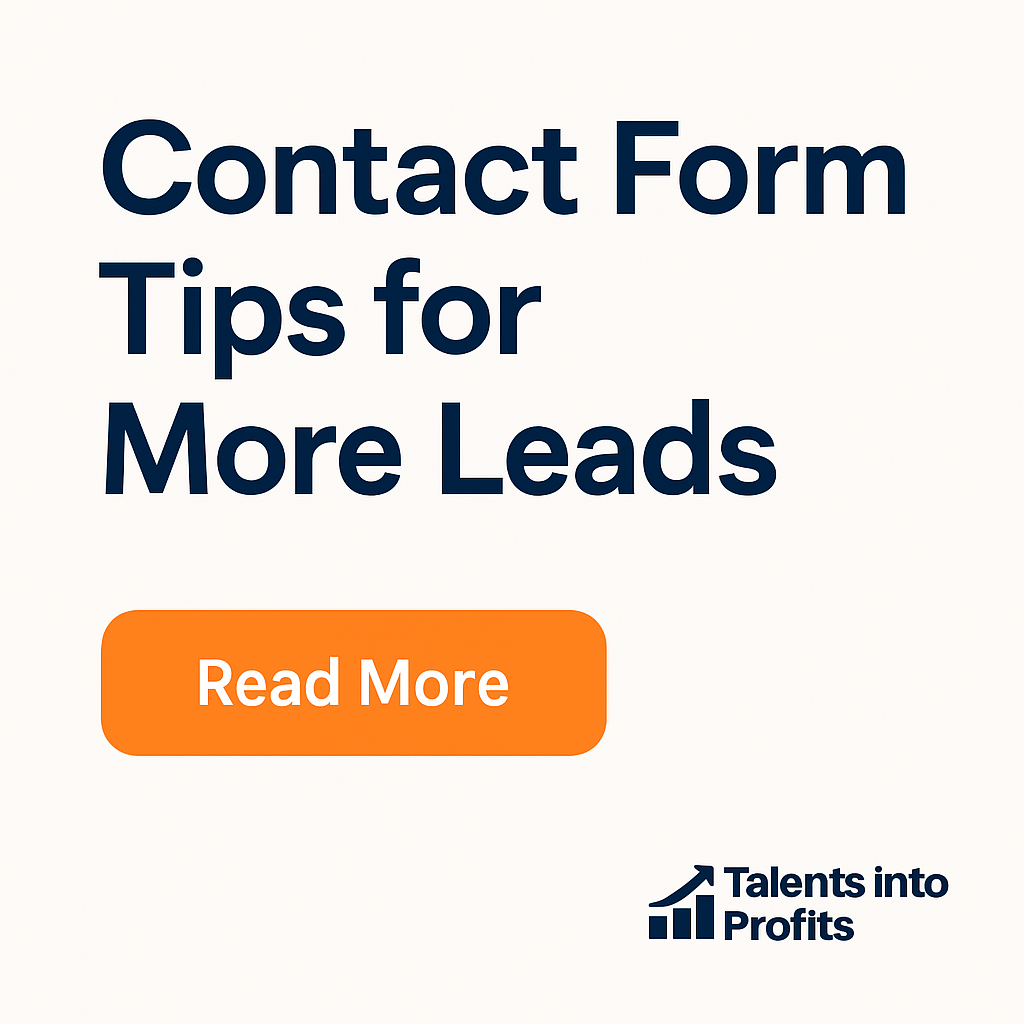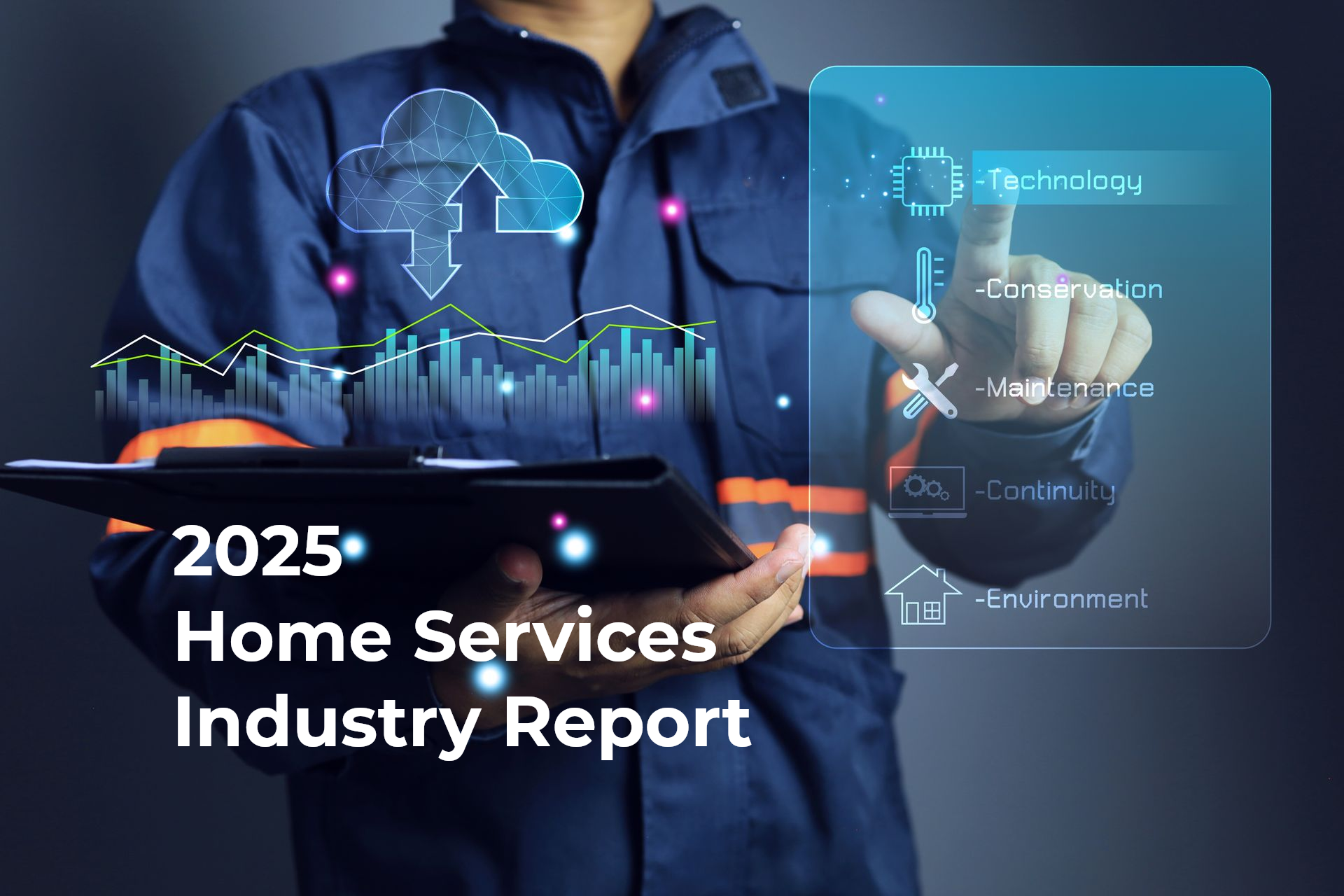HR Guide for Contractors 2026
How to create hiring, firing, and retention strategies in your contractor business
Will Schmidt - November 10, 2025
Gutter Marketing Guide Summary
Corporate HR is built for cubicles and coffee breaks — not crawl spaces and job sites. In the trades, HR for contractors means something different: it’s about finding people who can show up, gear up, and deliver quality work every single day. You’re not pushing paperwork — you’re building a crew that represents your reputation in every hammer swing, weld, or finished roof.
A solid HR system helps you hire faster, train smarter, and keep your best people longer (and out of your competitors’ trucks). It also keeps you compliant with the U.S. Department of Labor, which warns that misclassifying workers can lead to thousands in back pay and penalties if not handled correctly (dol.gov). Bottom line? Great HR isn’t about forms — it’s about flow. It’s what keeps your team safe, motivated, and loyal — the heartbeat of every successful contracting business.
This guide is your blueprint for mastering HR for contractors — from building your system before you hire your first employee to retaining your top talent and scaling with confidence. You’ll learn how much poor onboarding really costs, how the right training boosts retention and revenue, and why recognition and referral programs turn your crew into your best recruiters. Plus, we’ll show you how to set up your own HR portal and give you a free Contractor CRM + HR Tracker — a plug-and-play Google Sheet built to manage pay, bonuses, and performance. No jargon, no fluff — just a hands-on system to help you grow your contracting business, one great hire at a time.
Sections and Topics
- Pre-Hire Foundations
- Recruiting and Hiring
- Onboarding & Training Systems
- Retention, Culture & Communication
- Compensation, Benefits & Bonus Programs
- Tracking, Measuring & Scaling
- Building an HR System that Fuels Growth
Pre-Hire Foundations

Create your HR process before hiring
Before you post a job or schedule an interview, you need a repeatable HR system. Hiring ad‑hoc drains your time and money; replacing a single employee can cost one‑half to two times their annual salary, and a 100‑person company with an average salary of $50,000 could face turnover costs between $660,000 and $2.6 million per year[2]. Another study estimates the average cost of turnover at $13,355 per full‑time employee—about 25 % of that employee’s annual income—and notes that turnover costs in construction average $13,935 per person[3]. Investing in a solid HR foundation helps you avoid these losses and recoup costs quickly.
Create your HR process before recruiting
Contractor owners often underestimate the hidden costs of haphazard hiring. According to a Whatfix analysis, the average cost of onboarding a new employee is around $4,100, and the average training cost per employee is about $1,296[4]. For midrange positions, replacing a worker costs roughly 20 % of their annual salary, and executives can cost up to 213 %[5]. Meanwhile, new hires operate at only 25 % productivity during their first four weeks and may take up to 26 weeks to reach full performance[6]. Without a plan, you could waste thousands of dollars every time someone quits.
To avoid this, outline every step of your HR process before you start recruiting. Decide who will handle applications, interviews, background checks and I‑9 verification. Use a simple checklist so nothing slips through the cracks. Building your process up front not only saves money but also prepares your business to scale—especially when your time is split between jobsites and the office.
Value Add: Standardizing your process lets you identify bottlenecks and delegate tasks to your team. For example, you can assign a lead or supervisor to handle trade‑specific interviews while you focus on culture fit. Document each step in a shared folder (Google Drive works great) so everyone follows the same workflow. This consistency pays dividends when you begin hiring at scale.
Document your company handbook
A good handbook isn’t corporate fluff—it’s a playbook for your crew. Start with clear job descriptions for every role, including installers, cleaners, technicians and leads. Outline licensing and certification requirements and include a section on safety standards (such as OSHA rules and personal protective equipment). Clarify whether a role is classified as an employee or independent contractor; misclassifying employees as contractors is a serious issue that can deprive workers of minimum wage and overtime pay[1]. The U.S. Department of Labor issued a final rule effective March 11 2024 that revises guidance on how to determine whether a worker is an employee or contractor under the Fair Labor Standards Act[7]—include these guidelines in your handbook.
Value Add: A written handbook answers common questions up front, freeing you from repeating yourself. It also protects your business by demonstrating that you’ve communicated expectations about safety, licensing and conduct.
Understand legal, licensing and compliance essentials
Contractor HR isn’t just about hiring talent—it’s also about following the law. Check your state’s requirements for licensing and insurance (general liability, workers’ compensation and bonding if needed). Document OSHA and local safety regulations in your handbook and incorporate them into training. Schedule annual reviews of your compliance documents so you stay up to date on changing laws. When in doubt, consult the Department of Labor’s resources on misclassification and the final rule at 29 CFR Part 795[7].
Value Add: When you demonstrate that safety and compliance are priorities, you earn trust from both clients and employees. You’ll also avoid delays caused by safety violations or licensing issues.
Recruiting and Hiring Contractors and Labor

Target the right referrences and platforms for hiring
With your foundation in place, it’s time to find the right people. Referral programs are an underappreciated superpower: 45 % of referral hires stay longer than four years, while only 25 % of job‑board hires last that long; the cost‑per‑hire of referrals is $1,000 less than other sources; and 88 % of employers rate employee referral programs as their best source of applicants[8]. Referred candidates are 2.6 % to 6.6 % more likely to accept job offers, and using referrals increases retention by 40 %[8]. Hiring referrals can even reduce turnover by up to 20 %[9]. Here’s how to tap into that power.
Tap into your network and social media
Your current team, friends and family can be your best recruiting engine. Encourage employees to share job openings on their personal social feeds; people trust friends more than ads. Offer a referral bonus that’s meaningful but still affordable—because referral hires cost less and stay longer[8], you’ll see a strong return on investment. Remind everyone that a strong crew benefits the whole team.
Value Add: Provide sample social posts or text messages employees can send. Recognize team members publicly when their referrals become hires—this encourages others to participate. Track referrals in your HR spreadsheet so you can see who’s bringing in top talent. And remember, referred candidates are significantly more likely to accept your offer[8], so you’ll fill positions faster and with better‑matched candidates.
Post on targeted job boards
While referrals are essential, you still need a public presence. Post clear, concise job descriptions on specialized trade boards and local sites. The five best online platforms for trade jobs are:
1. Indeed – Large reach; use filters to narrow applicants.
2. iHireConstruction – Focused solely on construction trades.
3. ConstructionJobs.com – Industry‑specific with less noise.
4. BlueRecruit – Skilled trade matching with video features.
5. Snagajob – Ideal for hourly and entry‑level roles.
Use each platform’s location filters so applicants know exactly where you operate. Consider limiting your budget to avoid paying for unqualified leads. And remember to refresh your listings weekly so they stay visible.
Optimize your online presence
Potential hires will research you, so make sure your digital footprint reflects your brand. Update your website with a “Careers” page that lists current openings and benefits. Refresh your social media profiles with “We’re Hiring!” banners and pinned posts. On Google Business Profile, Yelp and Nextdoor, create posts or updates that mention you’re hiring and link back to your website. The more places you mention your openings, the more likely local tradespeople are to notice.
Value Add: Embedding an application form on your website collects candidates’ information directly into your HR system. Use a form that feeds responses into your HR spreadsheet or CRM so no one slips through the cracks. For ideas on how to build a simple CRM using Google Workspace and other tools, check out our related guide on “The 10 Best CRMs for Contractors in 2026” at Talents Into Profits—there you’ll also find a free CRM download that pairs perfectly with this HR system.
Use referral incentives to boost hiring
Referral programs pay for themselves. Because referrals cost less and have higher acceptance and retention rates[8], you can offer generous incentives and still come out ahead. Structure a tiered bonus: pay a small amount when the referral is hired and the rest after 90 days. Use non‑cash rewards such as extra vacation time, gift cards or a company party to celebrate successful referrals.
Value Add: Track who referred whom and when bonuses are due in your HR tracker. Recognize top referrers publicly—this amplifies participation and turns your crew into recruiters.
Onboarding and Training Systems for Contractors

Structure your program to reduce time and money
A structured onboarding program can make or break your new hire experience. Up to 20 % of employee turnover happens within the first 45 days, and employees who experience a strong onboarding are 69 % more likely to stay with the company for three years[10][11]. Poor onboarding not only causes early exits but also wastes your training investment; conversely, positive onboarding increases retention and productivity dramatically. Let’s design a system that keeps your hires around.
Start with preboarding
Before your new hire steps onto a jobsite, send them a welcome packet with videos and paperwork. Create a short orientation video that introduces your company culture, safety policies and job expectations. This reduces first‑day anxiety and ensures everyone arrives prepared. Remember, administrative tasks have costs too—onboarding documents and forms can run up to $400 per employee[12]. You can automate these forms using digital tools to save time.
Value Add: Include quick quizzes to identify skills gaps so you can tailor training to each person. When you combine preboarding with a structured onboarding program, you’re more likely to retain employees long term. Positive onboarding experiences boost employee retention and productivity by over 50 % according to industry research[10].
Test and train intentionally
On day one, conduct a short skills assessment to determine where a new hire needs support. Pair them with your best trainers—people who communicate well and enjoy teaching. Avoid assigning them to top performers who may struggle to explain their process. Structured training leads to faster proficiency; typical mid‑level managers need 6.2 months to become fully productive[13], but you can shorten that learning curve with clear tasks and resources. Don’t forget that new employees operate at 25 % productivity during their first four weeks[6], so plan your job scheduling accordingly.
Value Add: Use checklists or digital task lists so new hires and trainers know what topics to cover. Gamify training with badges or small rewards to celebrate progress. Keep training materials easy to find—host them on Google Drive, a private YouTube playlist or a dedicated HR portal on your website.
Document your SOPs and adopt modern training methods
Don’t rely on tribal knowledge. Document standard operating procedures (SOPs) for every task—from installing gutters to handling invoices. Store these in a shared drive or a tool like Trainual or ClickUp so everyone can access the latest version. Modern training approaches like microlearning and gamification yield impressive results: companies that offer comprehensive training programs generate 218 % higher income per employee and enjoy a 24 % higher profit margin[14]. Research also shows that increasing workforce education by 10 % yields an 8.6 % productivity gain, compared to only 3.4 % for equipment upgrades[15]. Meanwhile, 40 % of employees who don’t receive necessary training leave within the first year[16]; 70 % say training influences their decision to stay, and 87 % of millennials value professional development[17]. Engaged employees can outperform those in poorly trained environments by up to 202 %[18].
Value Add: Adopt microlearning modules or short videos to deliver information in bite‑sized chunks—microlearning reduces training time by 60 % and improves retention by 145 % according to e‑learning research[14]. Use gamified quizzes to motivate learners; gamified training increases motivation by 83 %[14].
Build a Central HR Portal
Imagine having all your hiring, onboarding and training materials in one place. A membership‑based HR portal built into your website lets you host videos, quizzes, safety documentation and forms behind a password‑protected area. New hires can log in, watch required videos, complete tests and upload documents. Your leads can track completion status and spot gaps instantly.
TIP can build a customized HR portal for your business in 1–3 months for around $999, including page design, membership setup and video hosting. This system pays for itself by reducing administrative time and improving retention. Plus, you can update content as your processes evolve.
Value Add: A portal keeps sensitive information secure and professional. You can even integrate a digital signature tool for contracts and add a chat function for questions.
Gutter Marketing - How to Get More Gutter Leads
Retention, Culture & Communication

How to retain top talent longer
Winning the hiring race is pointless if you can’t keep your best people. Construction and trade industries suffer from high turnover, but recognition and strong culture can turn that around. 71 % of employees would be less likely to leave their organization if they were recognized more frequently[19]. 87 % say meaningful recognition impacts job satisfaction[20], and employees who receive recognition weekly or monthly feel valued—94 % with weekly recognition and 88 % with monthly recognition[21]. Furthermore, 40 % of employees rank recognition from managers as the most impactful[22]. Here’s how to build a culture employees love.
Recognize your team publicly
Highlight achievements on social media and in team meetings. Celebrate work anniversaries, safety milestones, certifications and 5‑star reviews. Timely, authentic recognition makes employees feel valued: more than 70 % would be less likely to leave if they received more frequent recognition[19]. Recognition isn’t about big awards; it’s about consistent, genuine praise.
Value Add: Encourage your crew to share these recognition posts with friends and family. Not only does this boost morale, but it also acts as free marketing and recruiting. When prospective hires see a company celebrating its people, they’re more likely to want to join.
Encourage engagement and sharing
Ask employees to comment on and share company posts. Promote behind‑the‑scenes photos and customer testimonials that highlight your team’s craftsmanship. When employees feel proud of their work and their company, they naturally become brand ambassadors. This online engagement signals to prospective hires that your workplace is vibrant and supportive.
Value Add: Gamify engagement by awarding small prizes to the crew member whose post gets the most likes or comments. Track these interactions in your HR sheet to see who’s most active.
Stop the revolving door
Turnover drains profits; losing a seasoned technician means lost productivity and costly retraining. Remember that up to 20 % of employee turnover happens within the first 45 days, and businesses with strong onboarding retain employees for at least three years 69 % of the time[10][11]. Add weekly recognition to keep people engaged—employees who receive recognition weekly or monthly feel more valued and are therefore more likely to stay[21].
Value Add: Set up a simple recognition calendar so every supervisor knows when to acknowledge their team. Rotate recognition duties so everyone participates. Recognizing someone for a job well done can be as simple as a shout‑out during the morning meeting
Build a culture that keeps people talking
A strong culture isn’t created by accident—it’s built through open communication and shared values. Start by hosting regular team huddles where crew members can voice concerns and share ideas. Encourage the use of group chats (WhatsApp, Slack) for quick updates and camaraderie. Plan family‑friendly events like barbecue days or annual picnics; involving families fosters loyalty and pride.
Value Add: Implement a mentorship program where seasoned employees coach newcomers. This not only builds relationships but also accelerates skill transfer and creates a sense of ownership among senior workers.
Create career paths in the trades
Show your crew a future. Outline a clear ladder from trainee to installer, lead, foreman and supervisor. Explain the skills and certifications needed at each step and tie promotions to performance, safety and customer satisfaction. When employees see a path forward, they’re more likely to stay and grow with you.
Value Add: Provide paid training or reimbursements for certifications that help employees advance. Regularly discuss career goals during one‑on‑one meetings and use your HR tracker to document progress.
Compensation, Benefits, and Bonus Programs for Contractors

Incentives and Bonuses are great, but you need benefits
Pay and benefits aren’t everything—but they matter. Transparent compensation builds trust, while creative bonus programs motivate crews to exceed expectations. According to the U.S. Bureau of Labor Statistics, the median annual wage for construction laborers and helpers in May 2024 was $46,050, with the top 10 % earning more than $75,560 and the lowest 10 % earning less than $33,610[23]. Wages vary by trade—helpers in roof‑related roles earn about $40,590, while plumbing and pipefitting helpers earn around $39,270[24].
Research and set competitive pay
Use local labor statistics (like the BLS data above) and competitor research to set a fair salary range. Advertise a minimum‑to‑maximum pay range in your job descriptions so candidates know what to expect. Adjust wages based on experience, certifications and the difficulty of the work. Investing a few extra dollars per hour can save you thousands in turnover costs—remember that replacing an employee costs one‑half to two times their salary[2] or roughly 25 % of their annual income[3].
Value Add: Consider adding a pay bump after a 90‑day probation period to reward commitment. Use your HR sheet to track employee pay history so you can review raises and bonuses fairly.
Offer benefits that matter
Tradespeople value stability. Provide health insurance, retirement plans (such as a SEP‑IRA or simple 401(k)), paid time off and tool stipends. Include details on how benefits work in your handbook. For part‑time or seasonal workers, consider prorated benefits or bonuses tied to the number of hours worked.
Value Add: Survey your crew to find out which benefits matter most—then invest where you’ll get the biggest return in loyalty.
Structure salaries and bonuses
Avoid hidden pay scales. If you offer different pay tiers (trainee, installer, lead, foreman), document them clearly. Tie raises to performance metrics—such as safety scores, customer reviews and number of jobs completed—so employees know exactly what they need to do to earn more.
Value Add: Include cost‑of‑living adjustments annually. Create a simple spreadsheet to project the financial impact of raises and ensure your pricing covers compensation.
Bonus structure ideas that actually work
Rewarding great performance isn’t just nice—it pays off. Here are bonus ideas tailored for contractors:
1. Referrals from friends and family –
Offer a flat bonus or percentage when a referral is hired and stays for 90 days. Referrals yield lower hiring costs and higher retention[8].
2. 5‑star review generation –
Pay individuals who secure 5‑star customer reviews. Positive reviews generate new business and show employees that quality work is rewarded.
3. Number of days without an accident -
Give a team bonus when they hit safety milestones. Safety incentives foster accountability and reduce costly incidents.
4. Quarterly 5‑star review targets –
If your entire company hits a set number of 5‑star reviews in a quarter, everyone shares in the bonus. This encourages cooperation rather than competition.
5. Company vehicle based on position or tenure –
Reward long‑term employees with a company truck or fuel allowance. This is especially valuable for leads and foremen who travel between jobs.
6. Additional vacation time in lieu of cash –
Extra time off costs you less than cash bonuses but feels highly valuable to employees. Use this to recognize loyalty or exceptional performance.
7. New hire training bonus for leads –
Pay leads who train new hires effectively. This encourages quality mentorship and reduces turnover.
8. Recruitment bonus –
Provide a bonus to employees who participate in interviews or outreach that results in a hire. This broadens your recruiting team and taps into your crew’s networks.
Value Add: Document bonus criteria in your HR sheet and display progress toward goals on a whiteboard or internal dashboard. Transparency helps employees understand how they can earn more.
Why hosting, security and compliance matter
Your gutter site must be fast, secure, and compliant. Hosting keeps pages quick, SSL protects data (and boosts rankings), and ADA/privacy compliance avoids lawsuits. TIP includes all three by default, so you can focus on jobs, not tech issues.
Overlooked but important pages
Most gutter companies skip the “boring” pages, but they build trust and boost SEO. A gallery page with real project photos proves your quality and keeps visitors engaged. A 404 page keeps lost visitors from bouncing to competitors. And privacy policies and terms act as trust signals for Google while assuring homeowners their information is safe. Together, these overlooked pages can make the difference between ranking higher or losing both trust and leads.
Case Study: AD Green Gutters has seen 25 leads from their gallery page from January 1st to September 1st of this year.
Tracking, Measuring, and Scaling your Contractor HR

Inspect what you expect from your contractors
Effective HR isn’t a one‑time project—it’s an ongoing system that you refine over time. To keep everything organized and to unlock insights, use a customizable HR tracker. To make implementation easy, we’ve created an Excel/Google Sheet template that includes multiple tabs:
- Employee Compensation: Track wages, raises, and benefits for each team member.
- Hiring Checklist: Check off each step from application to onboarding to ensure consistency.
- Bonus Structure: Calculate bonuses based on referrals, reviews, safety days and training milestones.
- Employee Personnel List and Pay Schedule: Manage contact information, emergency contacts, pay periods and vacation days.
- Training Matrix & Skills Tracker: Document completed training modules, certifications and skill gaps.
This template is hidden behind an email capture form so we can send it directly to you and notify you when updated versions are available. The sheet aligns with the processes laid out in this guide and can be customized for any trade.
Value Add: Use the tracker to generate reports—such as average tenure, referral success rate and bonus payouts. Over time, you’ll see which incentives work best and where you need to adjust your budget or training.
Referral and bonus tracking
Track who referred whom, when the new hire was onboarded and when referral bonuses are due. Referral programs yield enormous returns—remember that referral hires stay longer, cost less and have higher acceptance rates[8]. Keep a running total of how much you spend on referral bonuses versus how much you save compared to agency fees.
Value Add: Analyze which employees make the most successful referrals; consider creating a “Top Recruiter” recognition program with an annual award.
Hiring checklist and onboarding steps
Use the hiring checklist tab to ensure every step—from application review and licensing verification to issuing equipment—gets done. This prevents miscommunication and ensures that every new hire experiences the same high‑quality onboarding. Remember that effective onboarding reduces early turnover[10][11]. Sticking to your checklist has a measurable return on investment.
Value Add: Add a column for notes so you can record observations about each candidate’s strengths and areas for improvement. These notes inform training plans and pairings with mentors.
Employee personnel and pay schedule
Keep all personnel information in one place—contact info, emergency contacts, start dates and pay schedules. Store copies of certifications and license renewals with expiration dates so you never miss a renewal. With pay schedules in the same sheet, you can forecast payroll expenses and plan cash flow.
Value Add: Create a dashboard that displays upcoming anniversaries and certification expirations so you can plan recognition posts and renewal reminders.
Common HR mistakes contractors make
HR mistakes cost time and money. Avoid these common pitfalls:
- Hiring without onboarding: Without structured onboarding, you risk high turnover; remember that 20 % of employees quit in the first 45 days[10].
- Using doers as trainers: Top performers aren’t always great teachers. Pair new hires with patient, communicative trainers.
- Paying recruiters unnecessarily: Referral programs and targeted job posts often outperform agencies at a fraction of the cost[8].
- Ignoring compliance: Misclassifying employees or skipping background checks can result in fines or legal trouble[1].
- Failing to track retention data: Without data, you can’t improve. Use your HR tracker to monitor tenure, reasons for leaving and training completion.
- Neglecting recognition: Employees who don’t feel recognized are far more likely to leave[19].
When to reevaluate and scale
Your HR system should evolve with your business. Review your processes quarterly: Are your interview questions yielding better hires? Does your onboarding still reflect current best practices? Are your bonus structures motivating the right behaviors? Use data from your HR tracker to make evidence‑based adjustments. As you grow, you may need to add roles like safety officer, warehouse manager or estimator. Evaluate pay bands and benefits annually to stay competitive.
Value Add: Schedule an annual HR strategy meeting with your leadership team to set goals for the coming year, such as lowering turnover by 10 % or increasing referral hires by 20 %.
Watch the Video on our Google Workspace HR and CRM System
Summary
Building a reliable team doesn’t start with hiring—it starts with systems. When you treat HR like an investment rather than overhead, you reduce turnover, increase productivity, and create a culture that attracts top talent. The data throughout this guide makes one thing clear: every hour spent improving onboarding, training, and recognition directly impacts your bottom line.
By organizing your processes, tracking performance, and empowering your crew, you’re not just managing people—you’re building a brand that lasts. Watch the short video below to see how our custom-built CRM and HR system through Google Workspace streamlines everything you just learned, from recruiting and onboarding to scheduling and performance tracking. It’s proof that the right tools turn great systems into unstoppable growth.
All document references:
- [1] [7] Misclassification of Employees as Independent Contractors Under the Fair Labor Standards Act | U.S. Department of Labor
- https://www.dol.gov/agencies/whd/flsa/misclassification
- [2] This Fixable Problem Costs U.S. Businesses $1 Trillion
- https://www.gallup.com/workplace/247391/fixable-problem-costs-businesses-trillion.aspx
- [3] Replacing Employees Costs Big Dollars
- https://hrp.net/hrp-blog/replacing-employees-costs-big-dollars/
- [4] [5] [6] [12] [13] The Cost of Onboarding New Employees in 2025 (+Calculator)
- https://whatfix.com/blog/cost-of-onboarding/
- [8] [9] 8 Facts on Employee Referral Programs
- https://www.eqorefer.com/blog/8-facts-on-employee-referral-programs
- [10] [11] The Great Acceptance And The New Battleground For Employee Retention
- https://www.forbes.com/councils/forbestechcouncil/2022/06/07/the-great-acceptance-and-the-new-battleground-for-employee-retention/
- [14] [15] [16] [17] [18] Mind-blowing Statistics Prove the Value of Employee Training - Shift E-learning
- https://www.shiftelearning.com/blog/statistics-value-of-employee-training-and-development
- [19] [20] [21] [22] 26 Employee Recognition Statistics You Need To Know In 2025 - Nectar
- https://nectarhr.com/blog/employee-recognition-statistics
- [23] [24] Construction Laborers and Helpers : Occupational Outlook Handbook: : U.S. Bureau of Labor Statistics
- https://www.bls.gov/ooh/construction-and-extraction/construction-laborers-and-helpers.htm
About the author
Will Schmidt
Will Schmidt, Founder and Owner of Talents Into Profits (TIP), has helped over 150 businesses across 17 different industries, including home services, healthcare, and SaaS, generating more than $11 billion in lifetime sales. His experience in providing branding, marketing, websites, and lead generation based on operational capacities has enabled his clients to continually see 20-50x monthly ROI for services rendered.
Subscribe to Blog
Sign up to get industry insights, trends, and more in your inbox.
Contact Us
We will get back to you as soon as possible.
Please try again later.
Book Free Consult
Join me for a 30-45 minute call to review how to grow your contractor business faster, more affordably, and easier.
SHARE THIS











